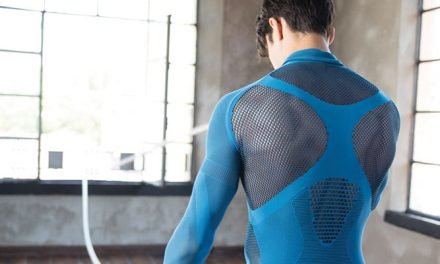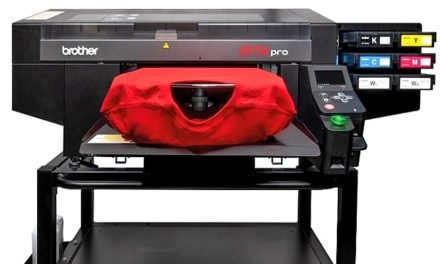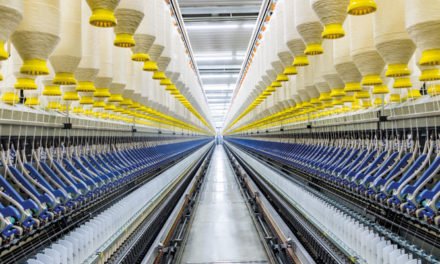ZDHC scouring, is a philosophy of chemical research and engineering that encourages to have a processes that minimize the use and generation of hazardous substances in the effluent, and minimize the usage of the finite resources water and energy. The research is focused on minimizing the Hazard and improving the effluent quality, maximize the efficiency of process, improving the fabric finish attributes and high strength retention, dye yield in case of solid dyeing and improving whiteness in one bath bleach, reducing the process time etc. ZDHC scouring is an answer to all the bitter pills associated with conventional scouring and enzymatic scouring.
ZDHC scouring by Aeltex PW 106
ZDHC scouring is an absolute innovation in organic chemistry, which address the pit falls of conventional scouring method Alkali– peroxide treatment and the recent innovation enzymatic scouring. A well balanced design, which makes the fabric suitable for one bath bleaching and providing all the attributes for dyeing with very minimal impact on environment, substantial saving in water consumption, energy and process time with almost 2.5 per cent gain on fabric weight, thus dye yield and tensile strength. Non enzymatic, non-surfactant and non-inorganic alkali based product design gives highly consistent results, highly absorbent fabric and very cost effective. Increased productivity and low effluent treatment cost are other advantages. In order to make it more explicatory, will detail all the process methods and the bitter pills associated with it which invokes an alternative product, safe, economical and give consistent results retaining all fibre attributes.
Important features of Aeltex PW 106
One shot organic scouring agent, which can potentially eliminate completely caustic soda usage in the process and can be done scouring for all type of shades and one bath full bleach white processing. It is a Nonsurfactant based product, which impart high wettability and stabilize peroxide up to 8 per cent dosage for the full bleach. Can completely obliterate the usage of lubricating and de-mineralizing agent even for high stretch fabric. Since only single product is involved in the process easy for dosage and highly consistent results, with whiteness index ranging 68 ( lycra fab) to 74.
Benefits
Highly cost effective and energy saving, and reduces almost three rinses. Since caustic soda is not an easily risible alkali, it demand many rinse and more quantity of mineral acid for core alkali neutralization. Drastic reduction of water consumption and time of process are resultant gains. It reduces the usage of mineral acid used for neutralization and reduction of TDS more than 70 per cent. Also improve fabric appearance, softness and wicking abilities. Efficiency of effluent treatment improves due to nonsurfactant, foaming related issues and cost reduction due to less treatment chemical cost. This all results in highly economical and most efficient processing to get consistent results.
Comparison with Alkali – Peroxide scouring
Strength loss
Conventional Alkali – peroxide scouring uses aqueous solution of NaOH to remove hydrophobic components from the primary wall (pectin, protein and organic acids) and the cuticle (wax and fats). Due to severe process conditions it also attack the secondary cell wall, which is of almost pure cellulose and it causes damage and affects the fibre strength. Also there is more hairiness, which affect the appearance of fabric. In ZDHC scouring (Aeltex pw 106) works on emulsification methods, and process conditions are mild, which help the fabric to retain its tensile properties much affected.
Dye loss
During caustic – peroxide scouring process the intra and inter molecular hydrogen bridges of the cellulose are calved due the extreme process condition, and the polar group of the polysaccharides and solvated. Most significantly it damages the actual structure of the cotton fibre and loses potential dye adsorption sites. This reduces the dye yield and results significant amount of dye loss. The mild process condition attributed by Aeltex pw 106 potentially increases the dye yield comparing to conventional alkali – peroxide scouring.
Appearance and tensile properties
The aggressive scouring treatment conditions frequently damage the fibre. Due to complete removal of the outer pectin coating of the cotton fibre, the surface profile becomes rough. This affects considerably friction properties of yarn. This also leads to increase in the amount of fly generation. Also there is a considerable strength loss due to oxy-cellulose formation while carrying out peroxide bleaching in alkaline condition. This is one of the most significant reason to get away from this severe processing method and adopting ZDHC scoring (Aeltex pw 106) as a perfect alternative.
Energy and time concern
Since the NaOH used in the conventional scouring is not an easily risible Alkali, several rinsing steps are practiced, which increase the demand of water, time and energy. This process is carried at high pH range (13 – 14) core alkali neutralization demands high quantity mineral acid (Acetic acid) which will be an environmental and cost concern too. Due to non-caustic process ZDHC scouring demands only a single rinse and saves significant amount of water, time and energy. Since the process is carried out at mild pH conditions, the amount of acid need for neutralization is too low and less cost and environmental impacts.
Effluent concern
A lot of harsh chemicals used in traditional scouring process, which are very much responsible to increase the amount BOD, COD, TDS in the effluent water. Almost 50 per cent total BOD, 40 per cent of the total COD and 15 – 25 per cent of the total pollution load created by the textile processing & dyeing is contributed by Caustic Soda ( NaOH). The auxiliaries used in the process – wetting agent, lubricating agent, de- mineralizing agent, peroxide stabilizer etc are having significant role in effluent water pollution. Surfactant related issues in effluent water treatment are well explicated above. Apart from these there is a risk of dangerous chemicals handling and plastic containers used for the auxiliaries.
In ZDHC scouring with Aeltex pw 106, there is no other chemical needed except peroxide and saves inventory, storage, effluent water quality and associated treatment cot. Reduce the usage of plastic containers and chemical quantity required for the water treatment.
Comparison with Enzymatic scouring and ZDHC scouring with Aeltex PW 106
- In the case of enzymatic scouring, the access to the pectic substance in the cotton plays a major role in deciding the efficiency of the process whereas in this ZDHC scouring method apart from the pectin it can remove well other impurities such as trash, ash, hemi cellulose etc.
- In enzymatic scouring the partial removal of hydrophobic impurities could vary process to process and could result a variation of moisture content and wettability. Aeltex PW 106 helps the complete removal of hydrophobic impurities, which inhibit the access to water and thus shows very consistent results in moisture regain and wettability process to process.
- The enzymes are not capable of removing many other impurities function as an impediment in dyeing process. This will result in many properties like fineness, elongation and moisture control of the fibre. Aeltex pw 106, potentially remove all the unnecessary materials and make the fibre attributes suitable for even – level dyeing by retaining all qualities.
- The inability to remove the fats and waxes demand the usage of surfactant based emulsifier, wetting agent and sequestering agent. The pollution associated with surfactant still persist, and the potential issues associated with plastic packaging, inventory and storage. So the enzymatic scouring will not fall under ZDHC norms. With Aeltex pw 106, there is no need of any other auxiliary and the product is powder packed in recycled paper bags. No threat related to plastic cans and completely ZDHC process.
- The usage of GMO enzymes and the potential threat associated with Genetically Modification of Microbes and mimicking with environment still persists in enzymatic scouring.
- The enzyme activity can be impaired by the auxiliaries used in the bath to enhance the scouring process like pH, electrolytes, oxidizing agents etc, makes it difficult to have consistent results. Metal ions in the water also can be an impediment in enzyme performance. This will make enzymatic process an un-preferred choice.
- Mostly enzymatic scouring fails to remove seed-coat fragments more adequately, which makes it confined in the processing of only highly combed yarns and fabrics. Not suitable for carded low cost fabric. Aeltex pw 106 is suitable for all type of yarn and fabrics. It can effectively remove all kind of impurities, which can inhibit dyeing. The degree of whiteness index in enzymatic scouring is too low and can only suitable for the dyeing of darker shades.
- ZDHC scouring (Aeltex PW 106) is suitable for all shades, one bath scouring and bleach with high whiteness index (68 – 74) and type of cellulosic yarn, fabrics and blends. All type of cotton, blended, viscose, modal, polynosic, linen, bamboo, bamboo blended with viscose etc. Mild process condition makes it suitable for all low wet strength yarns and fabrics. An absolute innovation to achieve complete sustainability and ZDHC in yarn / fabric bleaching and dyeing. It covers all pit falls in conventional alkali peroxide scouring and enzymatic scouring.






















